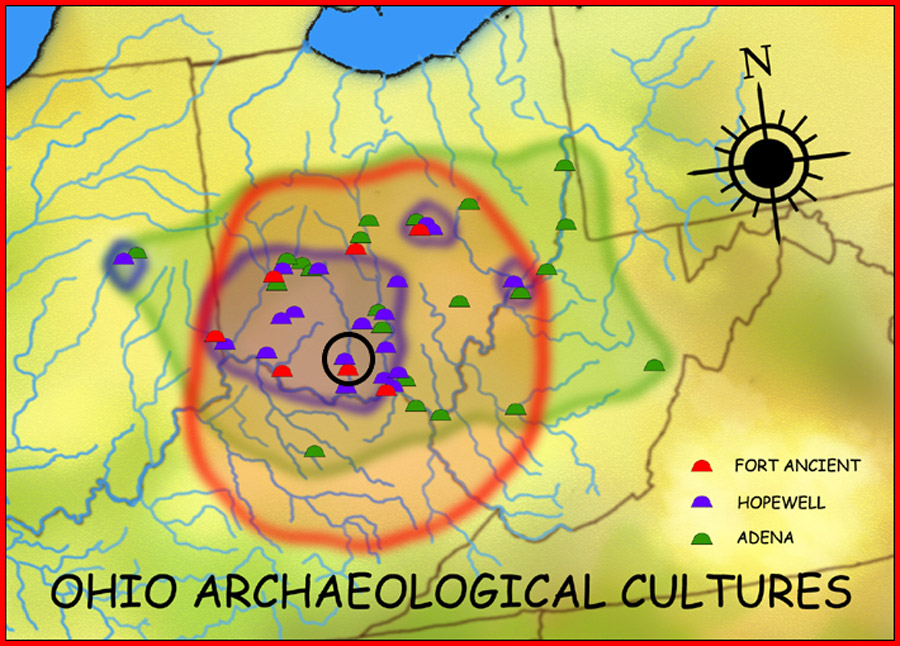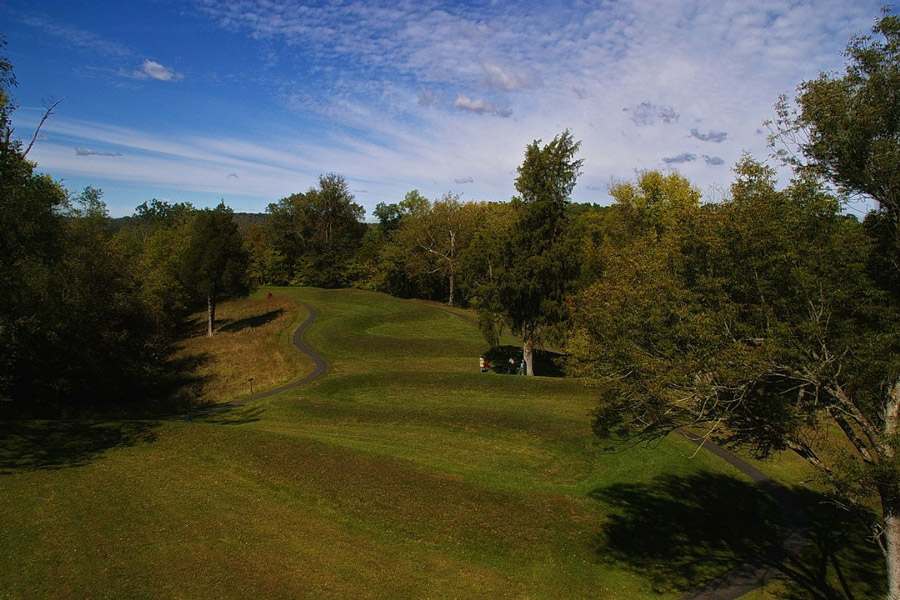In the eastern United States, nestled amidst the trees alongside a tributary of the great Ohio River is one of the most extraordinary, and mysterious formations ever created by man. The Great Serpent Mound, although never more than 3 foot (1 m) high, runs for 1,350 feet (411 meters) through the landscape.
This prehistoric effigy is the largest serpent effigy in the world, but it is almost entirely mysterious. The first record of this monument comes from surveys conducted in the 19th century by Ephraim Squier and Edwin Davis. They reported it in their historic tome “Ancient Monuments of the Mississippi Valley” published in 1848.
So much for modern Western rediscovery. But what is it and what was it used for? And who marshalled the extraordinary manpower required to build it?
The Size of It
In point of fact, the entire structure is even larger. Split into three parts, the serpent shape extends 1,375 feet (419 meters) along its full length. The general width of the mound tends to be around 20 to 25 feet (6 to 7.6 meters).
The mound itself conforms to the curve of the landscape on which it has been made. The head of the serpent approaches a cliff above a stream, with the body behind it winding back and forth, with seven coils. The tail ends in a triple coil.
The mound itself was constructed mostly from a layer of yellowish clay and ash that has been reinforced with a layer of rocks, before being covered in soil. The head of the snake also looks like it is trying to consume an egg-shaped mound that is approximately 121 feet (37 meters) long. There has been some debate between scholars whether this shape is an egg, a sun, or the remains of some kind of focal ceremonial platform.
Interestingly, there are similar serpent effigies found elsewhere in the world, including Scotland and Canada. And, given its low vertical profile compared to its other dimensions, this serpent falls into the category of objects which, like the Nazca Lines of Peru, would be best suited for viewing from the air in an era where that was seemingly impossible.
The Origins of the Serpent Mound
Archaeologists have debated the origins of the serpent mound for many decades. Despite excavations, there have been no artifacts or burials found that have been directly able to help to identify when or why it was built.
There are currently two leading theories for who may have constructed the monument. Some posit that it could belong to the Adena Culture, which dates from 800 BC to approximately 100 AD.
Others believe that the Fort Ancient Culture is more likely to be responsible. This would make the structure much more recent, as this culture dates from 1000 to 1750 AD. This theory usually places the construction somewhere in the 11th century.
With two competing theories offering dates a millennium apart it is clear that there is much to learn about this structure. Why then the uncertainty, and why such wildly different theories?
The Adena
The Adena Culture is a well-established and ancient culture known to have flourished in the North American continent. William Webb, a noted researcher, found evidence of this culture in Kentucky from as early as 1200 BC.
Comparing artifacts found in Kentucky with skeletal remains that had been found near the serpent mound led the research team to believe that it was constructed by the same culture, and it is known that the Adena spread as far as the Ohio Valley. And they are known to have constructed great mounds elsewhere, although nothing quite like the Serpent mound.
An eight-member team led by archaeologist William Romain investigated charcoal samples from the serpent in areas which showed the least erosive damage. There findings dated the construction to between 381 BC and 44 BC, a great fit for the Adena Culture at their peak in this location.
The Fort Ancient Culture
But the solution is not so cut and dried as it may seem. In opposition to this theory is that the serpent mound belongs to the Fort Ancient Culture. In 1996, the team of Robert Fletcher and Terry Cameron reopened some of the trenches that had been created by investigators in the 19th century.
They found charcoal in their excavations that when tested was dated to no earlier than 1070 AD. This would therefore seem to suggest that the Fort Ancient culture, who inhabited the Ohio Valley at this time, had built the mound, perhaps over earlier smaller mounds constructed by the Adena.

But this itself is problematic. The mound is uncharacteristic for the peoples of the Fort Ancient people. It contains no identifiable artifacts and there are no noticeable burials found near the effigy which is unusual for the culture of these people.
One piece of evidence that does bolster the case for them being the builders of the mound is the Alligator Effigy Mound in nearby Granville: another effigy in Ohio with some similarities which dates to this culture and time period.
- Blythe Intaglios Geoglyphs in California’s Desert
- Cahokia Mounds: The Largest Ancient City in North America
Yet other researchers, looking to unite the two competing theories, suggest that both could be true. Perhaps the Adena built the original serpent, and then a thousand years later the Fort Ancient Culture repaired sections of it which had become damaged over time, adopting the ancient structure for their own use.
What Was It For?
Based on research conducted in 1987, it was proposed that the oval and head area of the serpent aligned with the sunset on the summer solstice. This would provide unexpected supporting evidence for the Fort Ancient theory, as it should be noted that if it was built in 1070 AD then two key astronomical events may have influenced its location and building.
The first was a supernova in 1054 AD, well documented in contemporaneous texts from other cultures across the world and creating today’s Crab Nebula. The second was Halley’s comet which appeared in 1066 AD.
The mound is also located on the site of an astrobleme, the site of an impact caused by a meteorite striking the earth. This was identified by looking at the sedimentary stratigraphy, which shows a significant disruption of the deposit layers which could only have been caused such an impact.
This was corroborated by Ohio State University and the University of Glasgow. It may have been that the Fort Ancient culture, observing both the bright phenomena in the night sky and the impact location, may have associated the two and built the effigy in recognition of this visitor from the heavens.
Due to the location and the zoomorphic qualities of the mound, astrological associations have been strongly linked with its purpose. As well as the head aligning to the summer solstice, the tail of the serpent points to the winter solstice sunrise, at the other end of the annual cycle.

This suggests that it may have been used to make time or the changing of the seasons. This method may have given the local people advice on when to plant or harvest crops. Additionally, the curves in the body of the serpent have been identified to parallel lunar phases or alternatively align with the two solstices and two equinoxes, although they are so vague in the modern landscape that a true understanding of their meaning may always remain elusive.
The Serpent Mound
Absent some revelatory discovery or breakthrough in understanding, the debate for who made the serpent mound and what exactly it was used for will likely continue forever. There will be no certainty about whether the mound was used for astrological patterns, supernatural worship or to document a celestial event.
Regardless, the mound endures in the landscape, impressive and ancient. The amount of effort required to build on such a scale is a testament to its importance to the local culture of the area. It is truly a magnificent sight.
Top Image: Aerial view of the enormous Serpent Mound. Source: Timothy Price / CC BY 2.5.
By Kurt Readman
